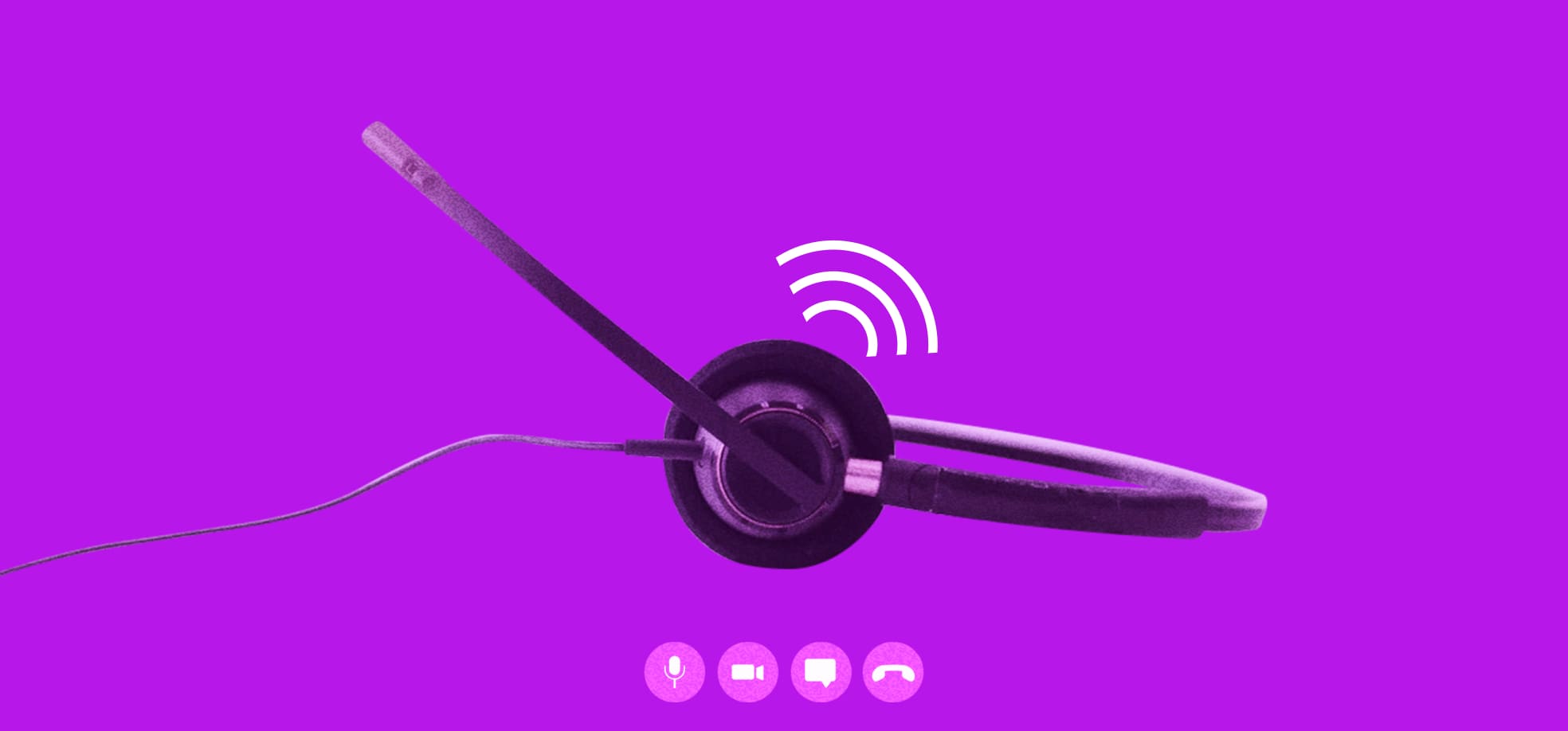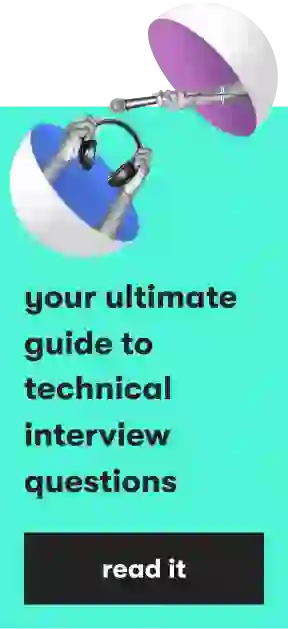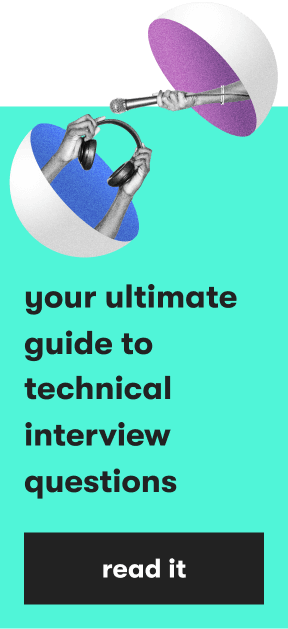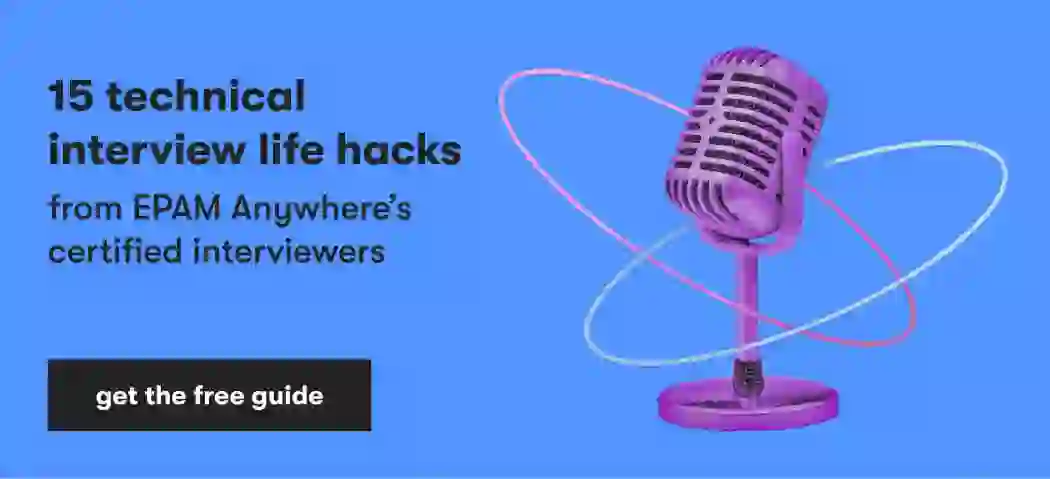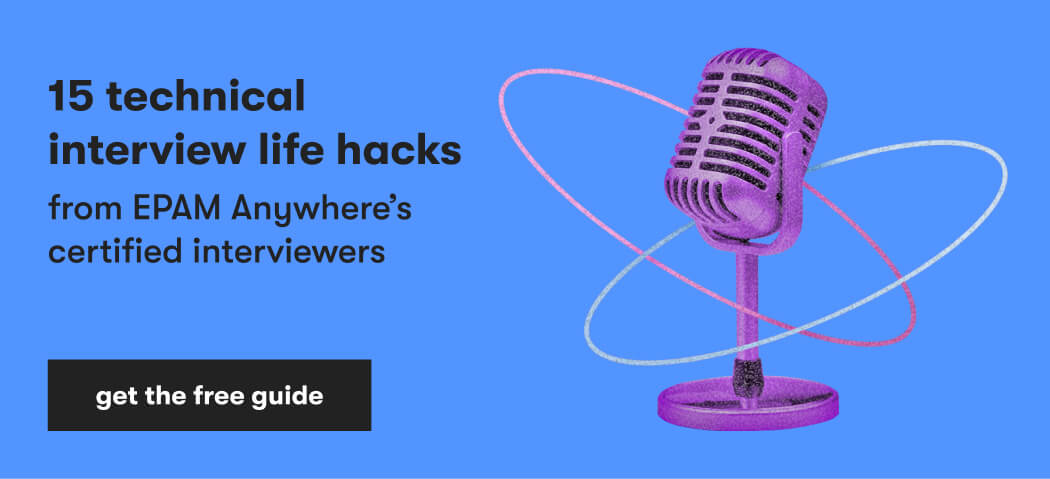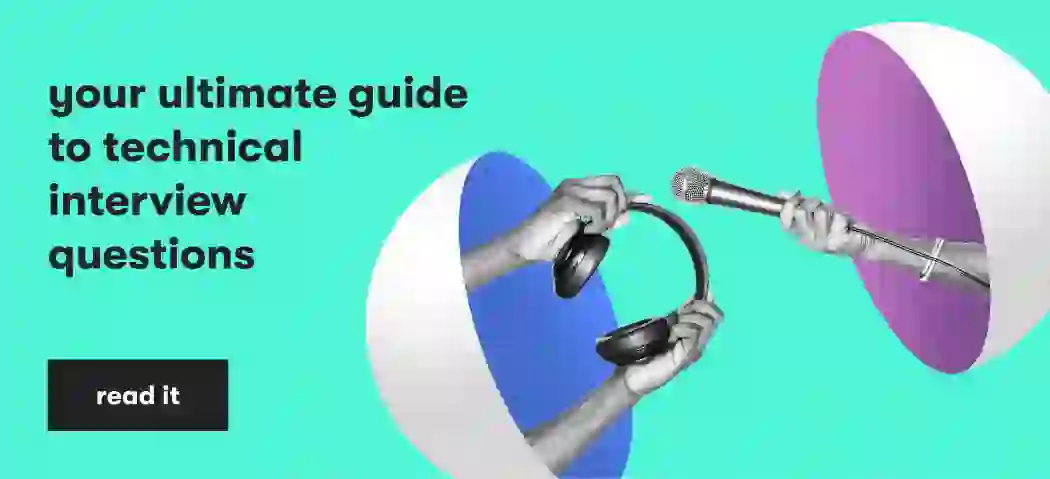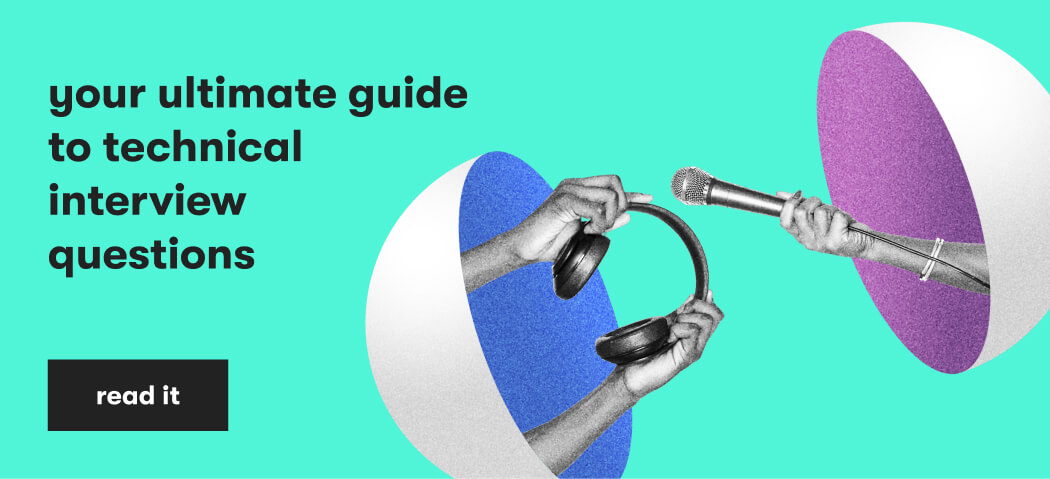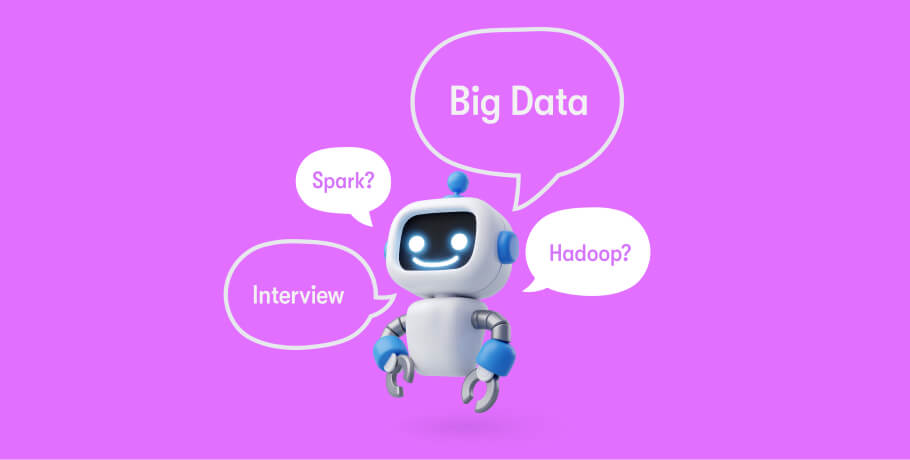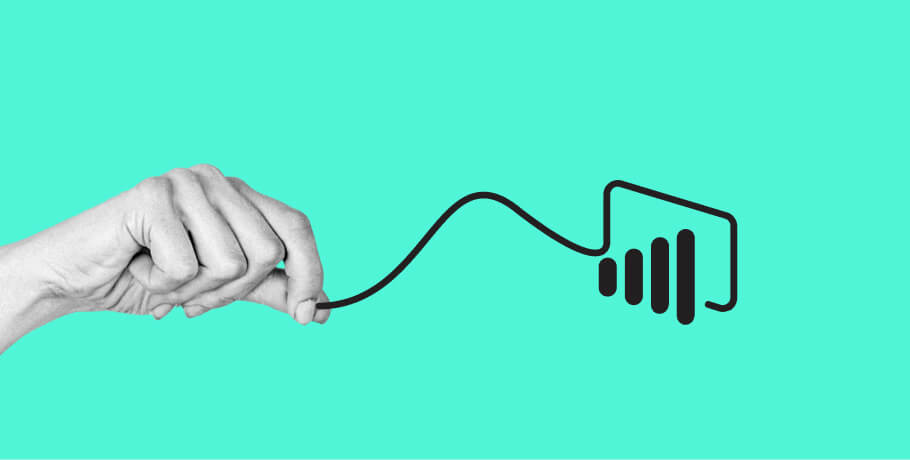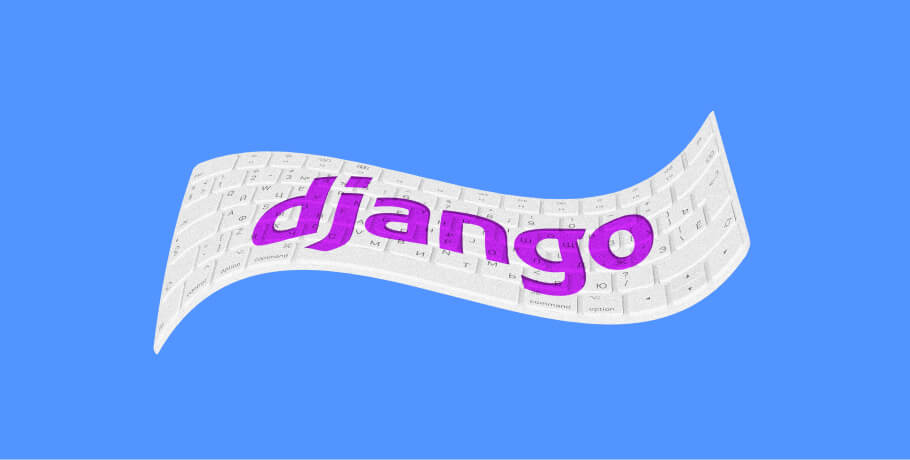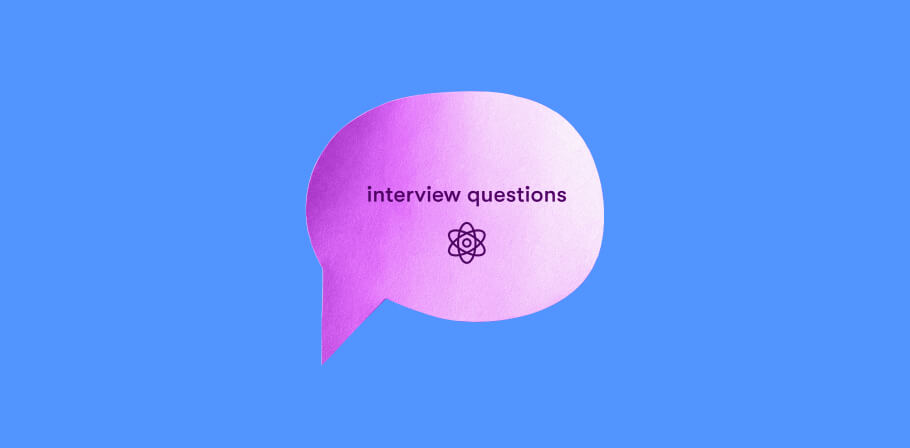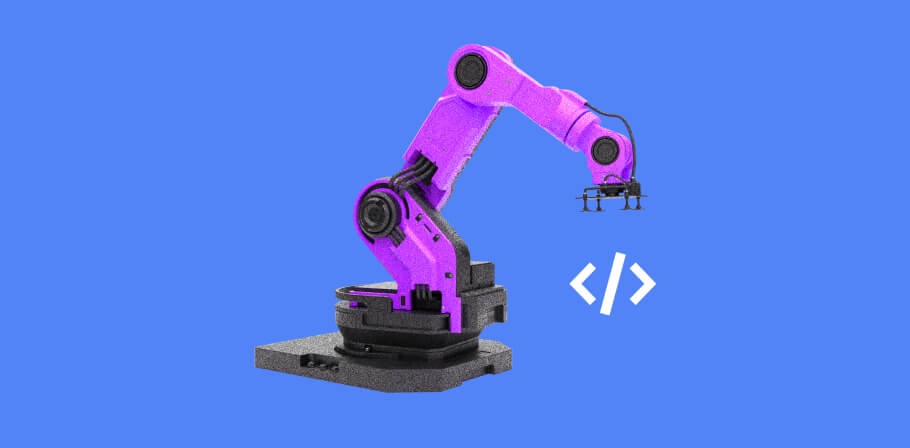Customer interview is an essential part of our employment process. During a client interview, our goal is to:
- Allow a candidate and a client to get to know each other.
- Figure out a candidate's qualifications, skills, and relevant experience on past projects.
- See if a candidate is a good fit for a position.
To help you pass a customer interview successfully, we've prepared our go-to guide with actionable tips that'll help you stay confident and present yourself like a pro.
1. Prepare a self-presentation pitch
A self-presentation pitch is a short 1-3 minutes speech that you can easily pull out when it's necessary to present yourself. Your pitch shouldn't be a gist of your CV or a list of your qualifications. It must be a storytelling speech that stirs interviewee's interest in your personality and allows both of you to continue a meaningful dialogue.
A typical self-presentation pitch includes:
- Your short description. Start your speech with a brief overview of your core skills, qualifications, and experience. Remember that they must be relevant for a role you're applying to and there's no mismatch.
- Description of your current project. Describe what your current project is about and its business goals, so a customer can relate.
- Challenges you've overcome. Without going deep into technical details, describe the challenges you had to overcome and what tools or methodologies you applied to solve the problem.
- Your contribution. After talking about project's challenges, it's natural to proceed to your role on a project and contribution you've made. Highlight the positive changes on a project after your participation.
- Your responsibilities. Talk about your duties on a project and what technologies and tools you've used to optimize your personal and team's workflow. You can use a S.T.A.R. technique to talk about your responsibilities: start with a situation, then move to a task or trouble you had to solve and finish with actions you took and a result you've received.
- Project methodologies and approaches. Close your speech with project management methodologies that were used on a project (Agile, Scrum, Kanban, etc), communication tools (JIRA, Basecamp, etc), and business processes you've worked with.
First impressions are the most lasting. Make sure your pitch catches interviewee's attention in the first 60 seconds. To keep your interlocutor focused, emphasize the most relevant technologies and experience that matter for a project.
Don't try to learn self-presentation speech by heart. Otherwise, you'll sound insincere and unnatural.
2. Tailor your pitch for a specific type of an interviewer
Next, consider your interviewer's background when preparing your speech. Generally, we distinguish two types of interviewers: specialists with a technical background like CTOs and Software Architects and specialists with an administrative background like Product Owners.
In an interview with a technical specialist, feel free to talk the language of frameworks, technologies, and gadgets. Professional jargon and technical terms are completely acceptable and welcome.
With administrative specialists, talk less about technology and more about results. Highlight the actionable results you've received after implementing a certain technical solution: optimized website speed, user retention, accelerated time-to-market, improved navigation, and so on.
3. Get ready for typical customer interview questions
The record shows that some questions get more popular than others and repeat an interview after an interview. Here are a few most popular questions and possible answers to them:
" – What was your last project about?"
Your task here is to briefly and concisely describe a project and your personal contribution to overall success. Highlight your responsibilities, challenges you had to overcome, and achievements on a project.
" – Why did you apply for this position?"
This question is designed to check your motivation in participating in a project, don't fail it! Nurture conversation with some specific facts in a job description like technologies or methodologies you're interested in working with. Talk about your ambitions and competencies you'd like to gain working on a project: be specific and concise about things you pursue. Meanwhile, don't talk about negative cases you'd like to escape in your current project.
" – What's your biggest professional challenge you're proud of?"
It's not necessary to talk about all challenges you've handled graciously. Ideally, talk about the challenges that correlate with the client's project and be specific about the issues you've handled and how.
" – What's your epic professional fail?"
No matter what awful experience you had in your past project, stay positive when describing it. Avoid judgemental language and emotional sayings. The golden rule in this case is to turn your problems into challenges and conflicts into different points of view. Talk about the lessons you've learned and what you'll do in the future to avoid any pitiful situations.
" – What is your core skill? Why do you consider it a core one?"
This question is popular among middle or senior level specialists. As an experienced professional, you're supposed to know your qualification and skills to tell an interviewer what you're good at and what your professional perspectives are.
" – How comfortable are you with technology or a tool?"
Here you can use a P.A.L. framework to answer the question. Start with a Problem: describe the situation when you had to use a certain tool or technology, then talk about Actions you took to solve it, and finish with Learn – what lessons you've learned.
An interview is a two-way street, so asking questions back is welcome. By asking your interviewee, you'll demonstrate your sincere interest and get a chance to get first-hand information on a project like problems you'll have to deal with.
4. Consider do's and don'ts
There are certain do's and don'ts you should consider during your client interview.
<grammarly-extension class="_1KJtL"></grammarly-extension>
Do's | Don'ts |
|---|---|
| Talk about your experience and skills that'll be relevant for a project. | Talk about your personal needs that motivate you to participate in a project like high pay. |
| Ask questions and show your interest to get a conversation going. Follow an 80/20 rule: an interviewee talks 80% of the time. | Answer abruptly like "Yes", "No", "I don't know", "I'm not sure". |
| Skip negative experiences and situations you've had. Keep a conversation on a positive note. | Talk badly about your ex-bosses, colleagues, project, and companies you worked for. |
| Show your confidence with power posing, tone, and temper of your voice, smile, and neat dressing. | Talk silently and show little interest in a project that doesn't match your preferences. |
| Connect with interviewers rather than impress them and stay empathetic. | Show you don't care about the project and your future tasks at all. |
5. Rehearse your speech with your skill manager
As a final step before an interview, sync up with your skill manager - a dedicated specialist whose main task is not only to help you build a personal career development plan (PDP) but also to ensure smooth project staffing your career a recruiter to rehearse your speech. They will listen to your self-presentation and provide you with feedback on what should be improved: excessive filler words, negative sentences, lack of specific facts, and so on.
However, everything depends on you and your motivation. There isn't a silver bullet to passing a customer interview. We'll support you through your journey with customer interviews, but it's you who'll speak and make an impression.
Wrapping up
Here's a short overview of how to pass a customer interview at EPAM. Prepare your self-presentation pitch in advance that'll allow you to describe your professional skills and qualifications in 1-2 minutes. Get ready for typical interview questions with concise answers. Avoid talking about bad experiences in past projects: always talk about issues as challenges and lessons you've learned with them. Good luck with your customer interviews at EPAM!

As Chief Editor, Darya works with our top technical and career experts at EPAM Anywhere to share their insights with our global audience. With 12+ years in digital communications, she’s happy to help job seekers make the best of remote work opportunities and build a fulfilling career in tech.
As Chief Editor, Darya works with our top technical and career experts at EPAM Anywhere to share their insights with our global audience. With 12+ years in digital communications, she’s happy to help job seekers make the best of remote work opportunities and build a fulfilling career in tech.
Explore our Editorial Policy to learn more about our standards for content creation.
read more
